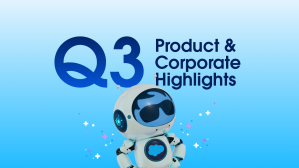Key Takeaways
- Agentic AI systems are making the century-old corporate org chart obsolete by handling complexity and dissolving organizational silos, enabling a shift from functional departments to fluid, outcome-based structures.
- Traditional organizational silos lead to fragmented customer experiences; AI agents, leveraging unified data and abundant coordination, resolve this by optimizing for the holistic customer relationship and breaking down boundaries between sales, marketing, and service.
- The future enterprise will organize around customer outcomes and coherent customer relationships, where coordination is abundant thanks to AI, shifting leadership focus from efficiency metrics to harder-to-measure capabilities like adaptability and trust.
For more than a century, businesses have organized themselves into tidy boxes — like sales, marketing, service, operations — each with its own logic, budgets, and way of working. The org chart became the default map for getting work done — not because it captured reality, but because it made reality manageable. Complexity was too messy, so companies built structures to contain it.
Enter the AI agent, a technology capable of rendering this inelegant illusion obsolete.
For the first time, organizations have a tool that can reckon with the complexity they’ve long been simplifying away. Agentic systems don’t just automate tasks; they understand relationships. They don’t just speed up workflows; they dissolve the boundaries between them. It will take time for organizations to adapt and for the technology to mature. But these systems have already exposed the org chart as a relic on the brink of extinction.
Agentic systems don’t just automate tasks; they understand relationships.
Reimagining the enterprise
Conversations about AI and work are understandably focused on whether or not certain jobs will disappear. But that’s the wrong question, at least for executives hoping to harness AI’s real potential.
The real transformation isn’t about headcount. It’s about dismantling the organizational architecture that has constrained companies for decades.
Customers never saw those neat organizational structures. What they experienced — what companies were effectively shipping — was fragmentation: the inevitable result of a structure designed for internal clarity rather than external coherence. And so come the inevitable lapses:
- A marketing promise disconnected from the service experience.
- A sales conversation that didn’t account for past complaints.
- A loyalty email sent to someone who was no longer a customer.
- Billing systems unaware of service failures.
Each touchpoint was optimized in isolation, with its own metrics and its own wins. But no one was optimizing for the relationship itself. No one owned the customer’s actual experience across all those fractured interactions.
CRM and data platforms brought real progress. Companies flourished because of them. But organizations still lacked the contextual intelligence to transform data into adaptive, relationship-level understanding. Companies could know what customers had done, but not what they truly needed.
Simplification as survival
Adopting the org chart wasn’t accidental, and it wasn’t incompetence. Every enterprise past a certain scale faced the same impossible choice.
In his book, “The Unaccountability Machine: Why Big Systems Make Terrible Decisions,” Financial Times contributor Dan Davies explains that large organizations have always faced two imperfect options for managing complexity: internally replicate the full complexity of their operating environment, or simplify it into manageable pieces.
Replication was impossible. Companies couldn’t truly model the intricate, ever-shifting reality of customer behavior, market dynamics, and internal interdependencies. The information was too unstructured, the relationships too fluid, the variables too numerous.
So they chose simplification, and enterprise software companies built the tools to make it work.
So they chose simplification, and enterprise software companies built the tools to make it work. For instance, when Salesforce was founded, we adopted the convention of a seven-stage sales process, from prospecting to close, and built our CRM around those stages. Different processes are triggered at each step, different levels of scrutiny are applied, and different metrics are tracked. It’s complex, but still a radical oversimplification of how selling works. Every silo across an enterprise followed a similar logic, each with its own software stack and its own unique set of workflows. Every enterprise software maker confronted similar tradeoffs.
This wasn’t about efficiency. It was survivability. But it guaranteed a fragmented, siloed, transactional customer experience. The very architecture that allowed companies to function at scale made it impossible for them to see customers as a whole.
A fundamental shift
Now, though, that architecture is starting to morph into something else altogether.
Just as the computer and then the internet have redefined how businesses operate, AI is doing the same. Agentic AI doesn’t just accelerate existing work; it shifts what’s abundant and what’s scarce, reshaping both competitive advantage and organizational design.
What AI makes abundant is coordination across complexity. Until now, coordinating at scale required rigid organizational boundaries — not because humans lacked capability, but because coordination itself was the scarce resource. Companies organized themselves around what humans could manage: discrete departments built on simplified models.
That constraint is lifting. And disappearing with it is the rationale for organizing around functions rather than outcomes. A coherent customer relationship becomes the enterprise’s organizing principle.
As independent tech analyst Benedict Evans observed in 2022, when reviewing the impact of the Chinese e-tailer Shein on fast fashion: “In the past, anyone talking to consumers had many separate budgets: advertising, marketing, rent, returns, shipping, and of course pricing, and you couldn’t ask, ‘Should we open stores in that state or just advertise there?’ Now all those budgets merge into one. They’re all one question: ‘What’s the best way to touch the customer?’”
Organizing around what matters
AI agents bring Shein’s disruptive potential to every business. When all customer data resides in a unified system that agents can access, interpret, and act upon, companies can coordinate in ways that were never before possible.
This coordination happens, for example, in real-time conversational workspaces like Slack, where structured data from enterprise systems meets the unstructured back-and-forth of how work actually gets done. People and agents alike tap into that conversational context, seeing what colleagues across the organization are working on and understanding connections that would have remained invisible in the old siloed structure.
What emerges are more fluid departments whose boundaries, resources, and priorities adapt dynamically to customer needs rather than organizational convenience. AI agents can traverse those previous boundaries — connecting Marketing’s promises with Service’s delivery, or Sales’ insights with Product’s design — enabling an organization to act as one coherent system whose attributes include:
- An autonomic core — deciding which processes humans working with AI should control, and which can run autonomously.
- Learning loops at multiple levels — so that every interaction, whether internal or external with customers, feeds improvement everywhere else. In 2025, Salesforce AI Research unveiled eVerse, a framework that trains agents in digital-twin simulations of enterprise operations. Practicing in lifelike environments with synthetic data and voice interactions, agents at first achieved a success rate of only 19% on complex tasks but improved to 88% — showing how learning loops create enterprise-ready agents.
- A purpose beyond efficiency — because alignment and adaptability matter more for employee experience, customer satisfaction, and revenue growth in a world where coordination is abundant.
For decades, companies have aspired to organize around customer journeys. But they still confronted the reality of disparate teams scattered around the company. With agents as the coordination layer, companies can handle far more complexity and do it at scale.
The path forward
The companies that thrive won’t use AI to make the old org chart more efficient. They’ll use this considerable coordination capacity to organize around what actually matters: the customer outcomes that businesses exist to create.
When coordination becomes abundant, the constraints and priorities shift. The challenge is no longer just managing complexity — it’s choosing what complexity to manage. Which relationships matter most? What information should be amplified through the organization, and what should be filtered out? Executives need to move beyond the old belief that shoving tasks into discrete departments is the only way to manage work.
When coordination becomes abundant, the constraints and priorities shift.
This transition won’t be easy. Leaders will lose familiar control mechanisms and will need to abandon established problem-solving patterns. The metrics that once defined success — departmental efficiency, headcount optimization, budget discipline — may become less relevant than harder-to-measure capabilities like adaptability, trust, and depth of relationships. The shift requires not just new tools, but new instincts — ones that will grow stronger over time.
And therein lies the opportunity. Every major transition creates space for those willing to learn new ways of working. What comes next won’t just look different. It will behave differently: fluid, adaptive, and centered not on hierarchy but on understanding. Getting there won’t be simple. But for the first time, it’s actually possible.
Future Scenario: The Coffee Roaster
Consider Drift Theory, a regional coffee roaster with a cult following among bean enthusiasts. An AI agent notices that an order placed by Marcus, a loyal customer, is running late and authorizes a premium replacement at no additional charge—a limited-edition varietal that normally costs more but fits Marcus’s purchase history.
The system surfaces the issue to Lena, a relationship manager at Drift Theory, who reaches out to Marcus. She apologizes, explains the upgrade, and asks Marcus what he thinks of the beans. Marcus responds with detailed tasting notes. Lena requests permission to feature the notes in Drift Theory’s online forum, turning a service failure into community content.
The agent handled the logistics; Lena built the relationship.
Go deeper
- Find more Futures insights in the Newsroom archive




















